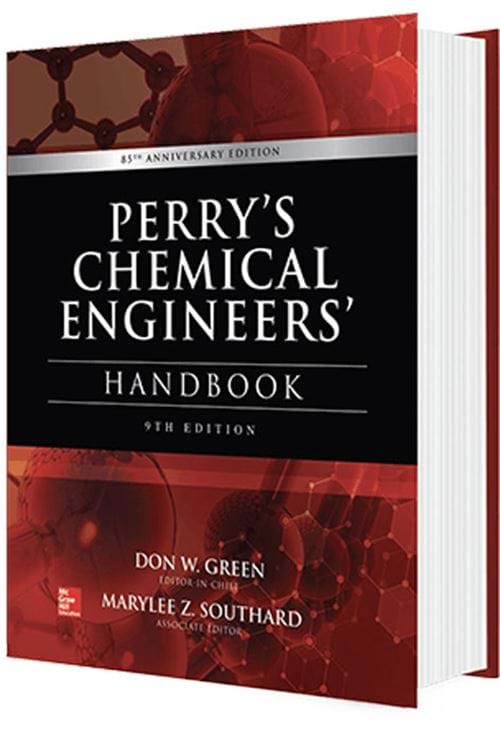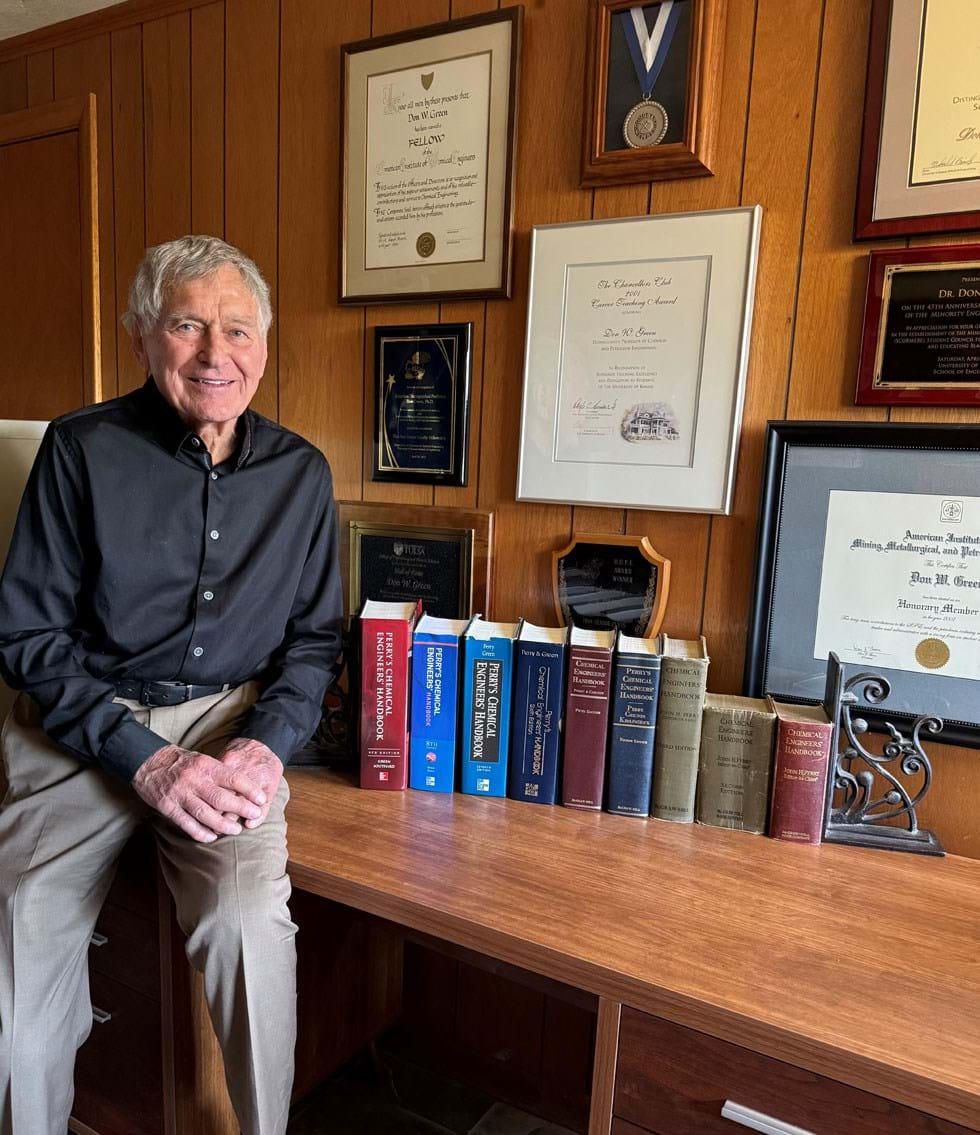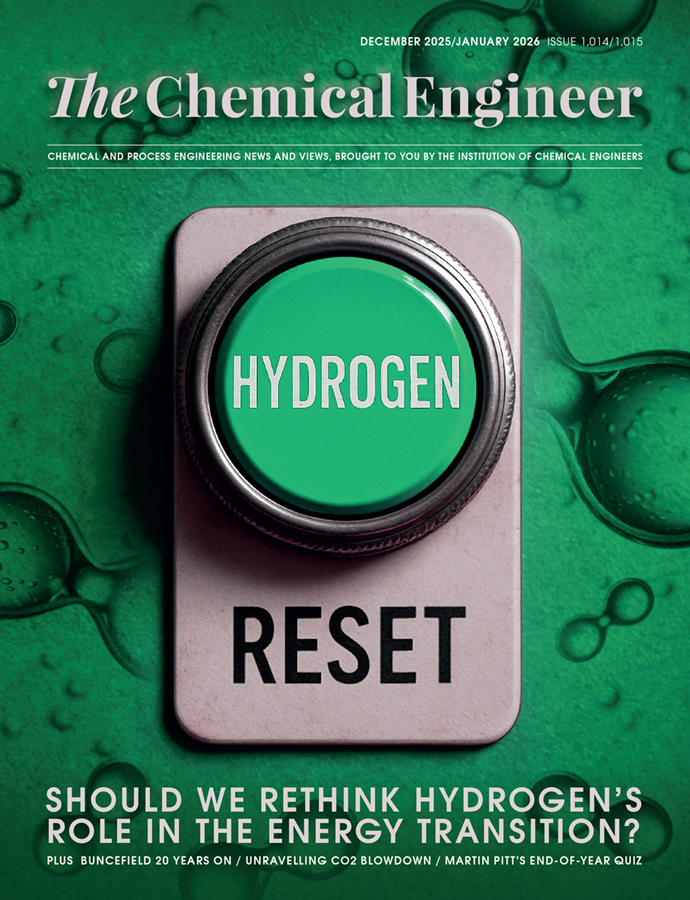Editing the Bible
Adam Duckett speaks with Don Green, the retiring editor of Perry’s Chemical Engineers’ Handbook

ASIDE from Perry’s own, Don Green’s name has appeared more than any other on the front cover of the so-called bible of chemical engineering. Now, aged 92, after close to half a century at the helm, Green is stepping down as editor of the renowned reference book.
I doubt there are many chemical engineers reading this who are unaware of Perry’s Chemical Engineers’ Handbook but just in case – it was first published by McGraw Hill in 1934 to “supply both the practicing engineer and the student with an authoritative reference work that covers comprehensively the field of chemical engineering as well as important related fields”.
The content has changed extensively in the intervening years, but as Green notes in the preface to the latest edition, published in 2019, the original goal still holds true today. Perry’s has been made available on CD-ROM (younger readers can ask their parents), and IChemE members can now read Perry’s online for free through McGraw Hill’s AccessEngineering portal.
“They want to publish a new addition about every ten years,” Green says. “I did the ninth edition, and I figured, based on my age, I better not try another one.”
The impression you get from Green is that passing on the baton is bittersweet. He’s proud to have taken it this far but sad to let it go. The sadness appears compounded by the fact that it was tragedy that thrust the responsibility towards him.
Hitchhiker’s guide
The Perry the book would eventually take its name from was John Perry, who had a PhD in chemical engineering from MIT and was working in industry during the height of the 1930s Great Depression when he was selected to edit the first edition. Lore has it that editing the handbook was an act of dedication for John Perry too – he would finish work for the week at DuPont in Cleveland and hitchhike to the Chemist’s Club in New York with proof pages (and a carton of cigarettes) so he could work all weekend on the book. Perry would go on to edit the second edition (published in 1941) and the third (1950).
John’s son Bob, who was working as a chemical engineer in industry when his father died in 1953, took on the responsibility and edited the fourth edition (1963) and the fifth (1973).
Green crossed paths with Bob in 1959 when they were both at the University of Oklahoma. Green had originally studied petroleum engineering at the University of Tulsa. He graduated in 1955 and had a commitment to serve in the military.
“I’m nearsighted,” he says, so had a non-flying officer role in the air force and two years to consider what he wanted to do once he was discharged. He settled on going back to school.
“I thought I would take chemical engineering because it was a broader field than petroleum.”
That’s how he came to meet Bob Perry. Green was his first PhD student.
“My wife Pat and I became close friends with Bob and his family. We were often guests at his home for dinner. He and I golfed together and played basketball with his sons.”
Green assisted Perry with his work on the fourth edition, helping with the section on kinetics. Then they briefly drifted apart. Green completed his PhD in 1963 and went to work for Continental Oil while Bob Perry moved to the UK to work as a consultant.
“In 1977, I got a message from him that he was working on the sixth edition.”
Green was now professor of chemical and petroleum engineering at the University of Kansas (KU), joining in 1964 and staying until his retirement in 2009.
“Pat and I visited Bob in London over our spring break in March 1978. We spent a week with the Perrys, over which time we talked and made plans about the handbook but also took time to sightsee in London and travel together. At the end of the week, we agreed that I would be a section editor for the sixth edition and become a co-editor for the seventh.”
Later that same year, Green received a shock call: Bob Perry had been killed in an accident.
“He had gone to the post office to pick up a letter that related to the handbook. He stepped out in front of a car, was hit and killed instantly.”
Perry’s wife Gail asked Green if he would step in to help complete the sixth edition.
“Bob had two sons, neither of whom had careers that were related to engineering. He had inherited the book from his father, and I think he wanted to pass the leadership along to a person who was close to him, and almost like family.”
McGraw Hill supported the idea and Green agreed to take it on.
Bob had initiated work on the sixth edition, but there was much work to be done including finding experts to edit sections of the book that hadn’t yet been assigned.
“I felt a bit overwhelmed at that time. I had no experience of taking on a job that large.”
Work started in earnest in 1979.
“I really just had to dig into the book…no way was I an expert in all those areas.
“I felt more or less comfortable with the fundamentals section since I’d been teaching them but when it came to processing, a lot of those processes I was not that familiar with.”
Jim Maloney, emeritus professor at KU, agreed to take on the role of assistant editor. In the search for section editors who could fill out the team, Green networked through meetings at the American Institute of Chemical Engineers (AIChE) and searched the literature for chemical engineers publishing articles on topics he needed assistance with.
“The work was basically completed at the end of 1983 and published in 1984. The sixth edition was formally renamed Perry’s Chemical Engineers’ Handbook.”

Recent Editions
Catch up on the latest news, views and jobs from The Chemical Engineer. Below are the four latest issues. View a wider selection of the archive from within the Magazine section of this site.




